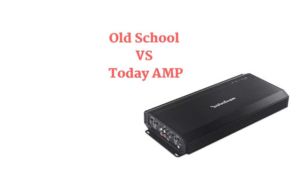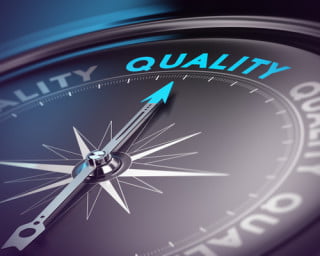 This debate comes up always in blogs and online forums featuring strong opinions. Which is best to have, modern amp or vintage amp?
This debate comes up always in blogs and online forums featuring strong opinions. Which is best to have, modern amp or vintage amp?
Both have its pros and cons surely, and in this article, I’ll strive to answer some critical questions on this debate topic.
It’s an essential thing to human nature to be in a dilemma about the specs, price, reliability, quality, and value of a product. Let’s use an integrated amp as an example. They’ve been in the market for more than a century now, and since it’s an amplifier and also a preamp which most times features a phono stage in a unit, it is a great place to start for audio setup.
Table of Contents
The Prices

How much we’re spending on these music devices are the first place we aim to start. On average, vintage amps can cost at most about a few thousand dollars. Modern amps, however, would likely need more spending if you’re going for a brand new unit; reaching about several thousand dollars or several hundred for a lower end.
Of course, vintage seems like it has the upper advantage since you can purchase them at yard sales or flea markets for about ten to fifty dollars.
But you should understand that these amps are about 40 years old. Unless you’re a top professional or you’ve got someone good in testing or repairing these vintage amps, it would be hard to find one which works flawlessly.
There is always some issue to crop up with old amps which is almost non-existent with new amps. Buying modern amps from a music equipment store or even a used one ensures that there aren’t any issues that you’d encounter that would require the attention of a professional.
Having considered the main criteria in the purchase of musical equipment, we will move into the next important part of this debate.
Their Quality

There is an old saying which goes “They don’t build them as before any more”. This is mostly true when it is related to music types of equipment. Though this same saying can’t be right for automobiles.
Vintage amps or instead vintage music equipment’s is traditionally overbuilt which means that for servicing these equipment’s, you have the option of changing any part if it requires a repair. Components such as diodes, capacitors, resistors, failed circuit, and transistors can be repaired with simple troubleshooting of the amp.
These vintage amps have service manuals available on the internet this comes handy if after some years of use since it was built to last.
This can’t be said about Modern amps sold in fancy music stores; they aren’t built to last in my opinion. These modern amps aren’t constructed to be serviced; instead, they’re built to be replaced.
However, there’s some advantage modern audio equipment possess and that is being affordable. New vintage music equipment isn’t cheap in them, and they’re still not cheap now.
Specs of the Amplifier
You’ve already made your choice by reading the above two buying criteria?
How about we draw your attention back to its specs and capabilities?
Does these change with modern vs vintage?
Basically,
it just depends on what you need your amp for. A vintage amp will traditionally feature a tape deck, tuner, turntable (phono), and an auxiliary source. Line level inputs like the aux, tape and the tuner mean that the source like mp3 or a CD player possesses enough output that it is set for the preamp to receive the signal and amplify it. Turntables aren’t lined level inputs meaning its output is low because phone cartridges don’t spawn enough gain for the preamp.
Signals from cartridges undergo a process called phono stage to ensure they’re amplified, being accepted by the preamp. Signals that spawned from is like a line level signal from a CD player.
Watts
How many watts is needed?
Does your speaker need watts?
A watt has usually termed a unit of energy, in an amp, it represents the volume of current an amp can send to your speaker—called a resistance. This means that for your speakers to produce sound, your amplifier will need to send out an alternate current to the speaker; it makes the speaker drivers move in and out to generate sound.
The more watts you need, the more sound you need, it is as simple as that. Speaker efficiency plays a vital role in amps need of power. Moderately, efficient speakers require 30 watts to produce a loud sound.
From the 1980s to modern times, amp ratings have taken a cunning route; to rate amps at a given wattage, several factors are considered. The amp needs to release continuous power across a set of assigned frequencies. This made companies build amps which are more prominent and much more powerful than their rivals.
However,
as years rolled by, manufactures tested and represented power ratings which showed false claims. Most modern cheap amps can’t release the needed power the amp needs continuously. Amplifier manufacturers would need to prove that their amps can produce its boasted power for a split at a set frequency.
Final Words
Concluding this debate of modern vs vintage amps, we need to consider the value of pieces of equipment. In this aspect, the old audio equipment has the upper hand. Vintage music equipment is always well-respected and highly sought after.
Every day, vintage equipment’s not just vintage music equipment are being discarded which decreases the volume of units existing. Just like in the simple law of demand and supply in economics, less volume means increased value.
Also, the return of vinyl collection in the vintage music market, the market has experienced an upsurge. However, if you can purchase a middle or higher end music gear, its reliability may be of great benefit to you in terms of collectability.
Just like we made mention above, there are plenty of forums and websites available which currently debates on modern vs vintage music equipment. To say definitely that one is better than the other is an overstatement. You need to listen to points from both sides and decide which is better for you, but bear in mind it might be a disadvantage to another person.